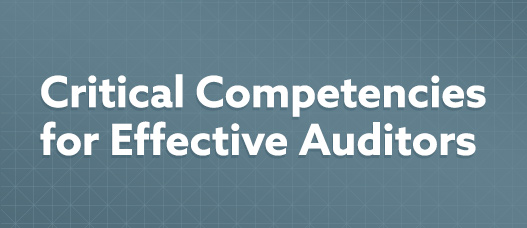
Successful CPA firms find a way to strike the right balance between performing a high quality audit and making a rate of return on the invested time. If one objective is given too much weight, over-auditing or under-auditing may result. The following is a list of core competencies that an audit must be willing to demonstrate, among others, in order to be both effective and efficient.
- Understanding the impact of recent significant changes in technical and professional standards. In order to properly assess audit risk, the auditor must have an adequate understanding of revisions to the applicable financial reporting framework used to prepare and fairly present the financial statements. In addition, the auditor must understand where the Code of Professional Conduct, generally accepted auditing standards, and other relevant professional or regulatory standards alter the auditor’s responsibilities compared to previous audit periods.
- Thoughtfully assessing the likelihood and magnitude of what could go wrong. The auditor must thoroughly understand the entity and its operating environment to be able to segregate where it is probable that a material misstatement may exist. Look at it from all angles to see if there is even a remote change something will go wrong in a given audit area that anyone will care about. Various combinations of likelihood (remote, possible and probable) and magnitude (trivial, significant and material) will result in a different assessed risk of material misstatement that should be directly linked to an appropriately modified detailed audit plan.
- Focus on identifying key controls that prevent, or detect and correct material misstatement. Key controls are those that significantly reduce the risk of material misstatement due to fraud and error. The auditor should be able to differentiate these key controls when evaluating the design and implementation of internal controls in order to assess audit risk and design the audit plan – rather than simply documenting the client’s entire process for transaction and event initiation, processing, reconciliation and reporting.
- Designing and documenting strong substantive analytical procedures. By thinking analytically first, the auditor may be able to perform few tests of details in areas of low to moderate risk. The auditor may also be able to justify higher scopes, less coverage of a population and smaller sample sizes in detail testing areas of moderate to high risk. Take credit for all the audit evidence obtained throughout the course of the audit process.
- Purposefully manage projects. In order to retain staff for the long-term, team members need to feel like they are growing professionally through on-the-job experiences and exposure to applying professional judgment in a supervised environment. Clients need to feel accountability for providing comprehensive and timely assistance, including having the books closed and supporting schedules available the first day of fieldwork.




